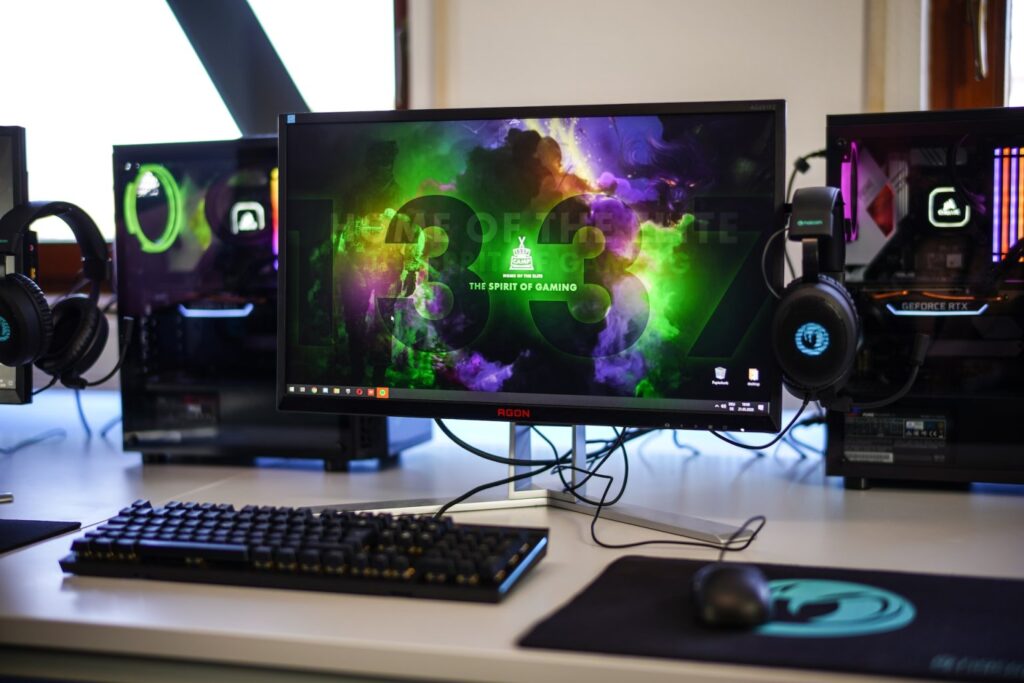How to Use Dual Monitors With Graphics Card and Onboard?

Using dual monitors with a graphics card and onboard display can be a great way to increase productivity, whether you’re working from home or in the office. With advancements in technology, it is now possible to have two computer screens side by side without the need for multiple video cards. In this article, we will discuss how to use dual monitors with a graphics card and onboard display, along with the advantages of using such a setup.
How to Use Dual Monitors With Graphics Card and Onboard?
Having two monitors can be a great asset to any workspace, increasing productivity and allowing for more efficient multitasking. We will provide you with detailed information on how to use dual monitors with both a graphics card and onboard graphics. You will learn how to configure your motherboard for multiple displays, the types of ports and cables you need, as well as tips for optimizing performance.
Step 1: Connecting Onboard Graphics Card
The first step in setting up dual monitors is to connect your onboard graphics card to your computer. This can typically be done by plugging the appropriate cable into the back of your computer, such as a VGA, DVI, or HDMI cable. Depending on your computer’s configuration, you may also need to use an adapter to connect your monitor to the onboard graphics card.
Step 2: Configuring BIOS Settings
Once you have connected your onboard graphics card, you will need to configure your BIOS settings to enable dual monitor support. This can typically be done by accessing the BIOS settings on your computer, which can usually be accessed by pressing a specific key (such as F2 or Del) during the boot process. Once in the BIOS settings, you will need to navigate to the “Integrated Peripherals” or “On-board Devices” section, and enable the onboard graphics card.
Step 3: Installing Drivers
After configuring your BIOS settings, you will need to install the appropriate drivers for your onboard graphics card. This can typically be done by downloading the drivers from the manufacturer’s website, and installing them on your computer. Make sure to select the correct drivers for your specific model of onboard graphics card.
Step 4: Selecting Monitor Layout
Once your onboard graphics card is set up and drivers are installed, you will need to select the monitor layout for your dual monitors. This can typically be done by right-clicking on your desktop and selecting “Display Settings” or “Screen Resolution.” From there, you can select the option to “Extend” your desktop across multiple monitors, or “Duplicate” your desktop on both monitors.
Step 5: Setting Display Configurations
After selecting your monitor layout, you will need to set the display configurations for each monitor. This can typically be done by accessing the “Display Settings” or “Screen Resolution” menu, and selecting the appropriate resolution and refresh rate for each monitor. You can also adjust the orientation and position of each monitor to best fit your needs.
Step 6: Maximize Your Workflow
With your dual monitors set up and configured, you are now ready to maximize your workflow. You can now easily access multiple windows and applications at the same time, which can greatly increase your productivity and efficiency. Whether you’re a designer, a programmer, or a multitasker, having dual monitors can make it much easier to get things done.
How to Enable Dual Monitors in Bios Gigabyte?
Gigabyte motherboards offer a wide range of features for users to customize their computer. One of the most popular features is the ability to enable dual monitors in BIOS Gigabyte. This feature allows users to utilize two displays at once, giving them more control over their computing experience. To enable dual monitors in BIOS Gigabyte, you will need to access the BIOS settings on your computer.
- First, you will need to reboot your computer and enter the BIOS setup by pressing the appropriate key, usually F2 or Del, during the boot process. Once you are in the BIOS setup, navigate to the “Integrated Peripherals” or “On-board Devices” section, and then look for the option to enable the onboard graphics card.
- Next, you will need to navigate to the “Integrated Graphics Configuration” or “Integrated Graphics” section. Here, you should see an option to enable or disable the onboard graphics, and you will want to make sure this is set to “Enabled.”
- After that, you can then navigate to the “Multi-Monitor” or “Dual Display” section. Make sure that this option is enabled, and then select the “Auto” option for the monitor detection. This will allow the BIOS to automatically detect and configure the dual monitors.
- Finally, you will need to save your changes and exit the BIOS setup. When your computer reboots, it should automatically detect and configure the dual monitors. You should now be able to extend your desktop across both monitors, giving you more screen space and making it easier to multitask.
It’s worth noting that the exact location and wording of the options may vary depending on the version of BIOS you are using, but the general process should be the same. If you have trouble finding the options, check the motherboard’s manual or consult Gigabyte’s support website for specific instructions for your model.
Conclusion
Setting up dual monitors with a graphics card and onboard graphics can be a great way to increase your productivity and efficiency when working on a computer. By following the steps outlined in this guide, you can easily connect and configure your onboard graphics card, install the appropriate drivers, select your monitor layout, set your display configurations, and maximize your workflow. With dual monitors, you can easily access multiple windows and applications at the same time, making it much easier to get things done.